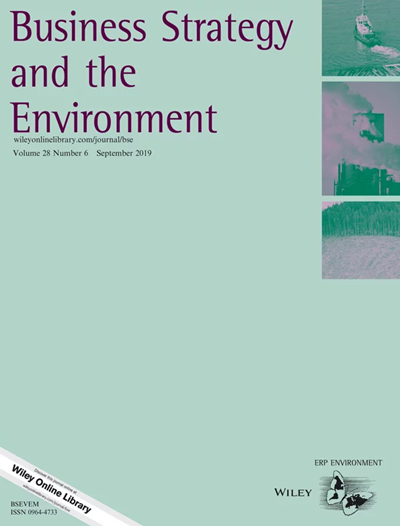How Companies Move to Circularity: Internal Reorganizing and Adjustment of External Collaboration
IF 13.3
1区 管理学
Q1 BUSINESS
引用次数: 0
Abstract
Firms in various industries strive to narrow, slow down, and close resource flows, moving toward a circular economy (企业如何走向循环:内部重组与外部协作的调整
各行各业的企业都在努力缩小、减缓和关闭资源流动,向循环经济(CE)迈进。我们的理论认为,老牌公司向CE的转型包括两个相互关联的关键维度——外部协作关系的调整和内部重组。我们对塑料行业进行了定性研究,对其进行了实证研究。我们的分析表明,成熟企业通过四种方式调整其外部合作:公司修改合作伙伴选择标准和二元关系的强度,在价值链中增加新的合作伙伴和角色,以及巩固外部合作网络。这些协作调整伴随着内部转型的三个关键方面——永久和临时组织结构和流程的重组。最后,我们的研究为组织内部和组织间的相互作用提供了新的见解。
本文章由计算机程序翻译,如有差异,请以英文原文为准。
求助全文
约1分钟内获得全文
求助全文
来源期刊

Business Strategy and The Environment
Multiple-
CiteScore
22.50
自引率
19.40%
发文量
336
期刊介绍:
Business Strategy and the Environment (BSE) is a leading academic journal focused on business strategies for improving the natural environment. It publishes peer-reviewed research on various topics such as systems and standards, environmental performance, disclosure, eco-innovation, corporate environmental management tools, organizations and management, supply chains, circular economy, governance, green finance, industry sectors, and responses to climate change and other contemporary environmental issues. The journal aims to provide original contributions that enhance the understanding of sustainability in business. Its target audience includes academics, practitioners, business managers, and consultants. However, BSE does not accept papers on corporate social responsibility (CSR), as this topic is covered by its sibling journal Corporate Social Responsibility and Environmental Management. The journal is indexed in several databases and collections such as ABI/INFORM Collection, Agricultural & Environmental Science Database, BIOBASE, Emerald Management Reviews, GeoArchive, Environment Index, GEOBASE, INSPEC, Technology Collection, and Web of Science.
 求助内容:
求助内容: 应助结果提醒方式:
应助结果提醒方式:


